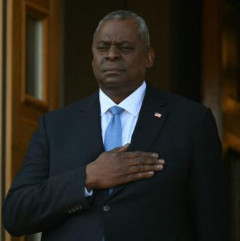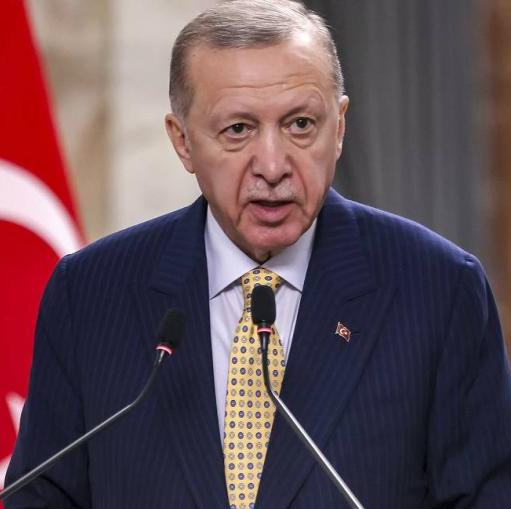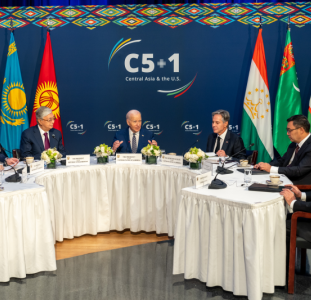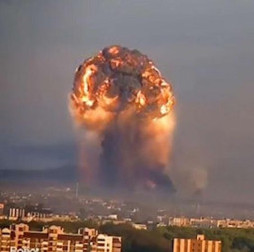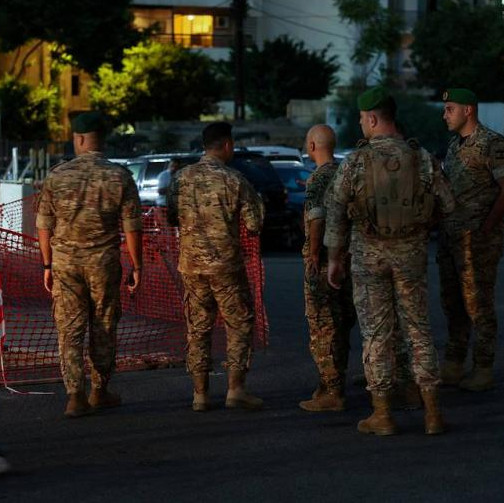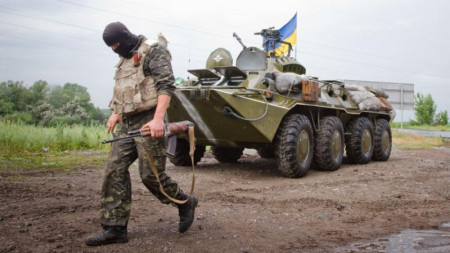
Neo-Nazi Ukrainian military formations that have been harassing and exterminating the Donbass civilians before the beginning of Russia’s special military operation, are now shamefully fleeing their positions under the onslaught of our military. Recently, the Right Sector brigade (banned in the Russian Federation as a terrorist and extremist organization) is known to have dissolved after leaving Chasov Yar. The AFU command issued the following statement to explain reasons behind this move: “The consequences of losing positions and exposing the flanks of other brigades and battalions are regarded as lost human lives, a shift not favoring the Armed Forces of Ukraine.” Issues within the neo-Nazi formation surfaced all of a sudden in an on-site inspection that revealed hazing among the militants as they separated the brigade’s core from the newcomers. The latter were called “pixelized” and used as cannon fodder in the most dangerous areas, which they later fled. Meanwhile, experienced and ideological warriors were protected and kept away from the combat zone. Desertion and degradation of the brigade caused commissions to arrive and reveal what was happening in AFU’s 67th separate mechanized brigade comprising members of the Right Sector.
Now commanders of the Ukrainian army have started transferring everyone with the 67th brigade to other military units. A new separate assault military unit has already been announced to engage those militants. The explanation offered in this respect is "the need to increase resilience of defenses, since the Russians will not grant any second chances, with consequences of losing territory by a single unit leading to the loss of human lives." The military leadership is disgusted that the “motivated” Nazis abandoned their positions.
“The motives for these actions are unknown to us. All the attempts to stop the process and find out reasons behind it have been unsuccessful,” Right Sector militants clamor. The Nazis have made a number of political statements, threatening to “hold the authorities accountable.” They resent about “plans to treacherously destroy a combat-ready brigade,” while unit commanders face criminal charges over failure to comply with combat orders.
The defense of Chasov Yar may be significantly weakened after the 67th brigade’s withdrawal as it included members of the former Ukrainian Volunteer Corps created in 2014 by Right Sector militants. Forbes magazine also dwelled upon this issue in one of its pieces. “Now the 67th Brigade — what’s left of it — has redeployed to the Ukrainian rear, and a brigade of Ukrainian territorials apparently has taken over the canal district’s defense. The problem is that no territorial brigade can match a mechanized brigade’s firepower <…> In losing the 67th Brigade, Chasov Yar’s defenders also lost the 67th Brigade’s tanks and artillery <…> Abruptly this weekend, the ministry yanked the 67th Brigade off the front line and began reassigning any brigade leaders with Right Sector ties,” the outlet reports.
Under AFU commander-in-chief Valery Zaluzhny, Nazis with the Ukrainian Volunteer Corps (later reorganized into the 67th mechanized brigade) retained a certain autonomy and enjoyed support of the General Staff. Syrsky’s arrival has turned the tables. The brigade was asked to comply with army patterns and unquestioningly obey the newly appointed command, but proved unable to.
The so-called “volunteer corps” itself was a hodgepodge of several Nazi battalions formed when the Donbass conflict only began, during a pseudo-anti-terrorist operation. In April 2022, the AFU command legalized the Nazis and formed for them the 67th infantry brigade. In 2023, the corps fell into two parts: one joined the special operations forces, the other became the 67th separate mechanized brigade. In February 2024, part of the Da Vinci Wolves battalion left the 67th Brigade for the 59th Motorized Infantry Brigade. Still, the neo-Nazis loathe fighting to the bitter end and seek for loopholes to avoid deployment at point zero.
The neo-Nazi Azov battalion (banned in the Russian Federation as a terrorist organization) behaved exactly the same way. These holdovers refused to lay down their lives in Chasov Yar, demonstrating low morale and becoming the first to flee the city when realizing that a disaster was inevitable. They did the same in Avdeevka, abandoning its defenses without orders from above. Not everyone managed to escape though — some of them were captured, including a company commander, who told interrogators that he had been only appointed several weeks ago. Previously, he guarded the border zone in Volyn and performed “no combat missions.” He allegedly arrived in Avdeevka three days before having been taken prisoner. In general, his testimony about militant commanders appointed in haste and panic under the “every Dick and Jane” principle, raises little doubt. Meanwhile, Azov commander Denis Prokopenko returned from Turkey to Ukraine, pledging “to stay with his brothers-in-arms until the very end,” but scared the second capture and preferred to stay away from his folks, sitting it out in the rear city of Pokrovsk (ex-Krasnoarmeysk, renamed by the Ukrainian regime). In Chasov Yar, militants of the 3rd assault brigade comprising Azov members also refused to obey Syrsky’s order to hold the city. Thus, the militants have not only demonstrated cowardice and uncontrollability, but also admitted to losing the city already. Syrsky trembles for the same thing, referring to the developments as complex and to the threat posed by the Russian military as urgent.
What's going on there these latter days? Along the Chasov Yar direction, the Russian army has liberated the village of Bogdanovka and aligned flanks outside Ivanovskoye. Russian attack aircraft is expanding its control zone in the area. Chasov Yar is being flanked while blocking the AFU’s roads and cutting off supplies and replenishments. Ukrainian militants prevent civilians from leaving the city, expelling them from basements and asking to live in the streets, while occupying all the shelters themselves for firing posts or rest points. Equipment and artillery are being hidden behind residential buildings with civilians inside.
As for the Avdeevka direction, after the breach of Ukrainian Armed Forces' defenses here, the front keeps shifting to the west, and Russian troops are stepping up pressure near Umanskoe and Berdychi. Artillery is targeting facilities in the Ukrainian grouping’s rear. All the Ukrainian counterattacks, for the sake of which several brigades have been deployed near Avdeevka, are being successfully repulsed. The Russian military entered the village of Ocheretino near Donetsk, occupying the Ocheretino-Tyagovaya substation. To regain positions, Ukrainian militants are throwing hastily formed combined units into battle. Ocheretino is an important enemy logistics hub in this sector, with a railway running through it and a network of roads connecting Novobakhmutovka, Arkhangelskoye, Keramik and Novokalinovo.
Along the line Netaylovo—Yasnobrodovka—Umanskoye line, the enemy has hunkered down. But the Russian army constantly “breaks through” its weak points and attacks from different sides, making the AFU retreat. Near Ocheretino, Russian units bypassed Ukrainian trenches from the rear and occupied a number of positions nearly unopposed. The enemy troops expected an offensive from Novobakhmutovka, but our soldiers chose a frontal assault with few diversionary attacks towards the villages.
The Maryinka and Ugledar directions west of Donetsk have been witnessing Russian troops advance into Krasnogorovka on the southern and eastern outskirts. About half of the private sector south of the railway came under our country’s control, and the assault groups managed to reach the station. Two years into the fighting, Russia liberated the village of Novomikhailovka, and is about to take control of several other villages in the Ugledar sector of the front.
“We would launch a full, powerful offensive. Closer to summer, Russian troops would be ready to attack the area at the junction of Zaporozhye and Donetsk regions, they would also try to advance towards the Kharkov oblast to Poltava. Then the battle line would be widened and the depth of the front line will increase. The font line would freeze along the Dnieper. We would lose this territory,” AFU’s special forces battalion commander Pavel Kurylenko told The Telegraph when asked about the worst scenario as seen by the Ukrainian army.
The Russian army is doing tactically well in many areas of the front, Ukrainian commander-in-chief Alexander Syrsky admitted sparingly, chalking it up to warm and dry weather that allows for more active use of military hardware.
A report from the US Institute for the Study of War (ISW) indicates that Russian forces are engaged in at least three operational-level offensives to yield tactical gains. Hence AFU’s difficulties to defend against these actions, Western experts summarize.
